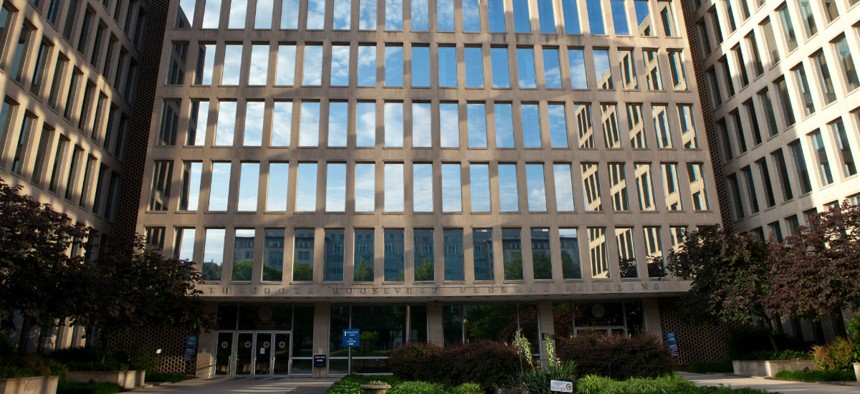Trump Administration Outlines How the OPM-GSA Merger Would Work
The White House plans to move the portions it can transfer administratively this year, while retirement and health care offices will have to wait until 2020 and for legislation.
The Trump administration this week provided additional details about how it will implement its proposal to integrate the functions of the Office of Personnel Management into the General Services Administration, Defense Department and the Executive Office of the President, although much remains contingent on Congress approving legislation.
According to a fiscal 2020 budget justification published by GSA, the majority of OPM’s functions will be sent to GSA, making OPM a human capital service alongside GSA’s existing Public Buildings Service and Federal Acquisition Service. Meanwhile, the majority of OPM employees, who work in the National Background Investigations Bureau, will be transferred to the Pentagon, while three employees who work on policy issues will be sent to the Executive Office of the President as an office modeled after the Office of Management and Budget’s Office of Federal Procurement Policy.
Acting OPM Director Margaret Weichert said Wednesday that the changes would take place in two broad phases: this year, functions the White House believes can be done administratively, like HR Solutions and OPM’s IT services, will go to GSA, while remaining offices, such as those that work on retirement and administration of the Federal Employees Health Benefits Program, will have to wait for Congress to pass legislation.
“We’re finalizing some of the legal authorities, but we think there’s a huge amount around HR services, IT and many shared services that we will be able to do administratively using a variety of vehicles,” Weichert told reporters. “I think some of the pure statutory elements defined in Title 5 and elsewhere, particularly around the trust funds and pure policy and oversight activities, would require legislation. And we have a forthcoming legislative proposal that will be coming out soon, although I can’t give an exact date.”
The cost of the transition, as requested in the GSA budget, would be $50 million in fiscal 2020. The document also offers some new details about where other OPM functions would wind up in the reorganization, although many questions remain.
An Employee Services office would administer laws and regulations related to recruitment, workforce planning, performance management, pay and leave, as well as programs promoting work-life balance and diversity. A new Health Care and Insurance office would consolidate OPM’s existing health care and insurance responsibilities into one organization, administering FEHBP, Federal Employees’ Group Life Insurance, the Federal Long Term Care Insurance Program, and other health insurance-related programs.
Although the initial reorganization plan was unclear about where OPM’s work to uphold merit systems principles would wind up, the budget justification makes clear it would be part of GSA as the Merit System Accountability and Compliance office.
The budget justification does not outline whether the reorganization would lead to a net job loss at OPM, but it states that 3,315 NBIB employees would be transferred to the Defense Department, while 152 posts at the OPM Office of the Inspector General would be absorbed by the GSA IG’s office.
Weichert did not say Wednesday whether the OPM director would remain a Senate-confirmed presidential appointment. It is also unclear whether the legislation would be part of a broader proposal to reshape collective bargaining at federal agencies, which likely would dampen the reorganization’s chances in Congress.
Eric Katz contributed to this report.




